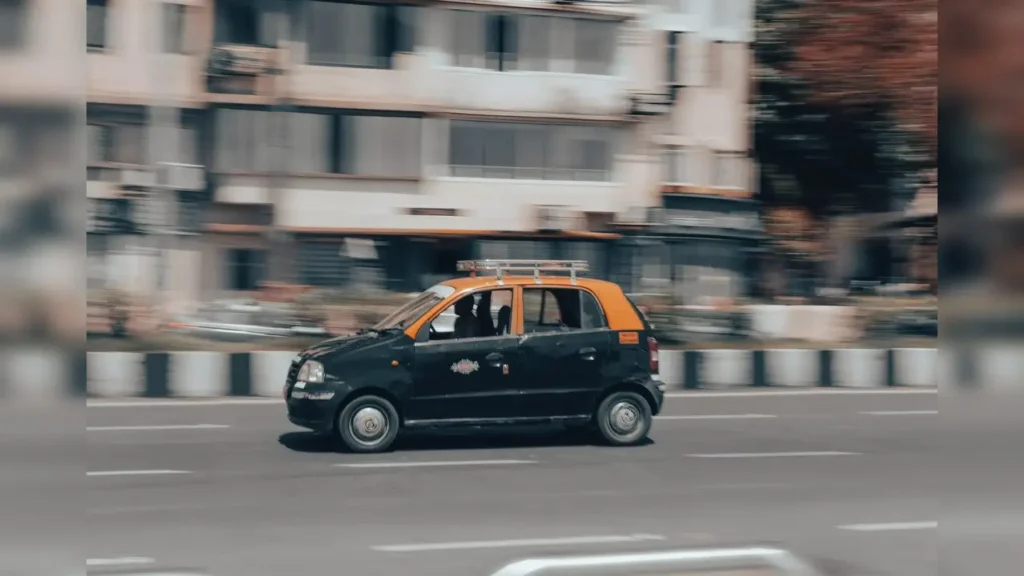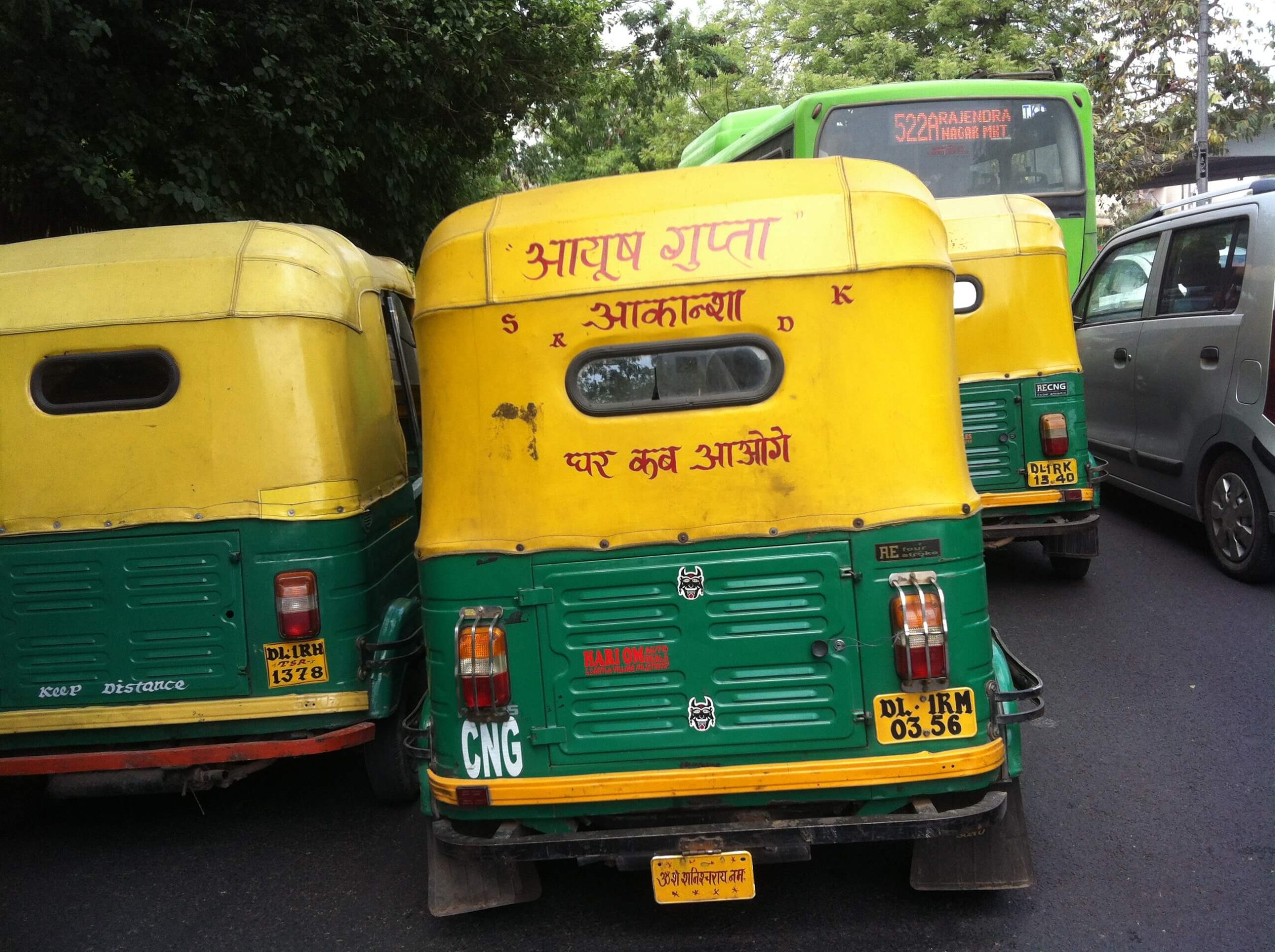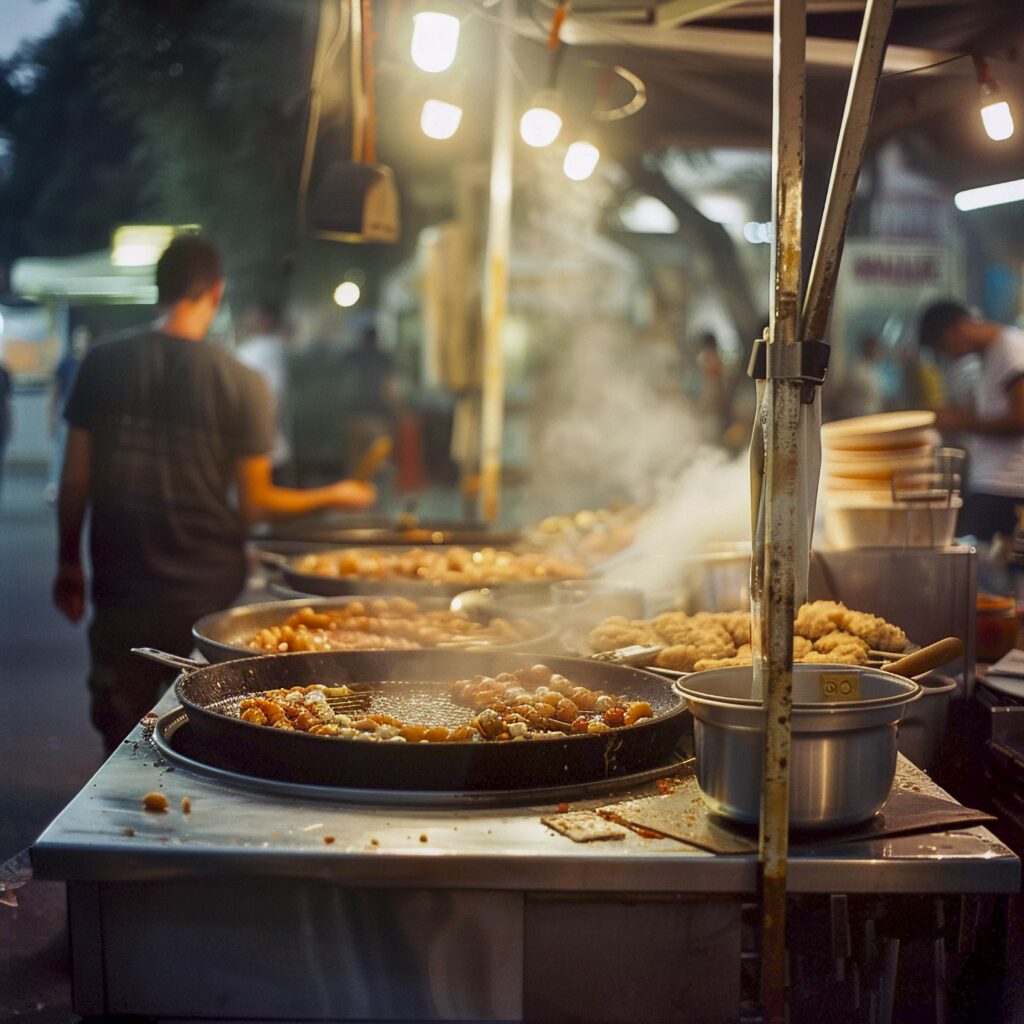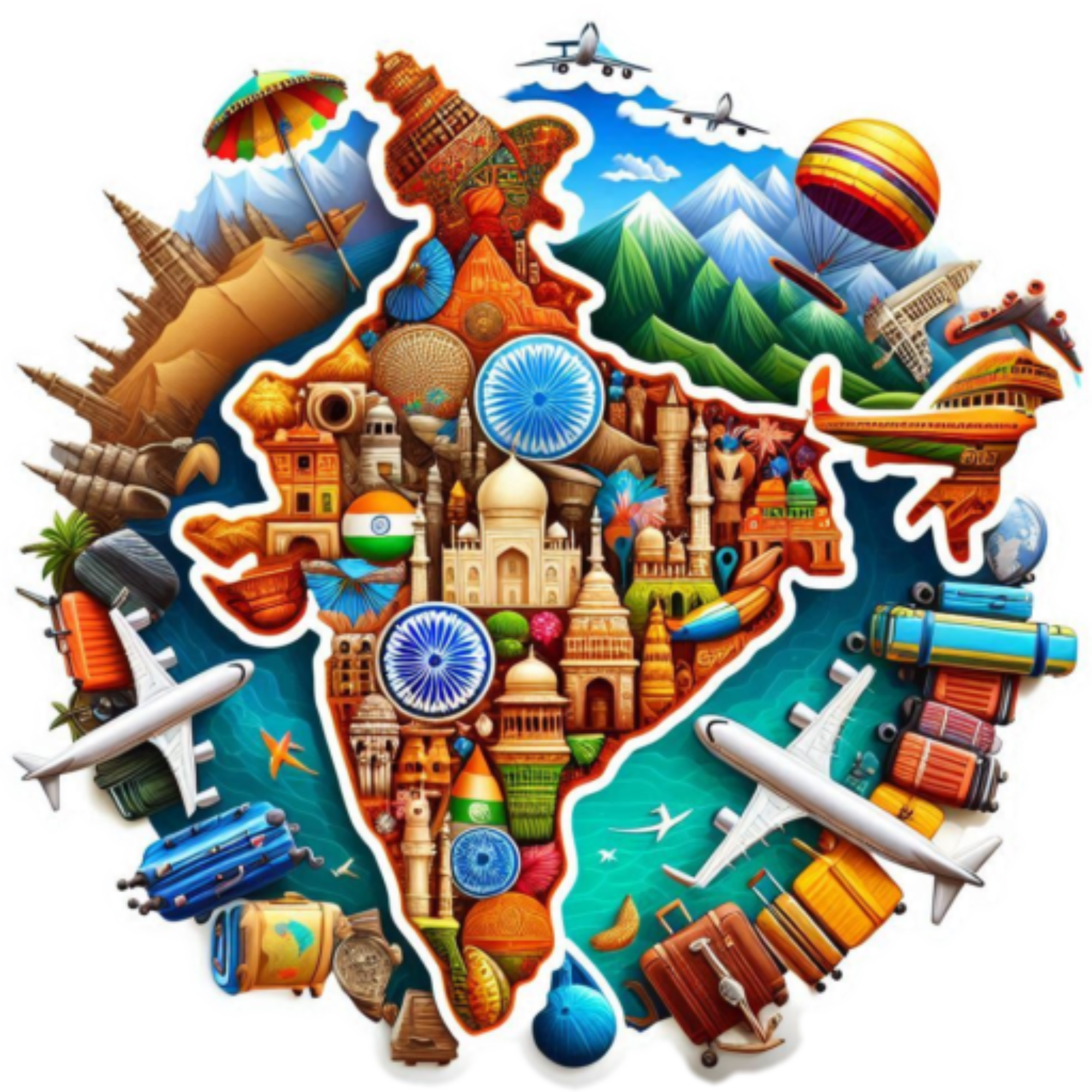As our Zurich flight headed to Mumbai, I struck up a conversation with my fellow passenger – a German banker on his first trip to India. Quite unlike the stoic German stereotype, he was buzzing about his India itinerary. And, quite predictably, like a German and a Banker, he had each activity planned to a T:
- Work diligently all week in his Goregaon office.
- Jog every evening along Marine Drive.
- Take off early on Thursday for a tour of Dharavi.
- Fly to Delhi Friday night, spend Saturday there, visit the Taj Mahal on Sunday morning, and head back to Delhi just in time for his flight home.
It looked an immaculate plan, on paper! But, as anyone familiar with Mumbai would know, reaching Marine Drive from Goregaon during the rush hour? That’s where the plan goes south! In Mumbai, as in India’s most metro cities, distance is a complex formula involving time, traffic movement and the whims of the city’s Gods, who dig up the city as and when they want!
I offered him a few India hacks, which he diligently noted in his journal. Following them might have helped him dodge the infamous “Delhi belly”, or at least handle it with a bit more humour. But advice on India’s travel quirks only goes so far.
For all those on their first trip to India, keep in your mind, that India is not a plug-and-play tourist destination.
The key to enjoying India is acclimatization.
So, before you jump on that plane to India, take note of the following.
1: Health Precautions Before Traveling to India
Before you embark, especially if it’s your first trip to India, a few health tips can make a lot of difference.
India is tropical, so mosquitos and insects can be found everywhere, depending on the season and location. Even if you’re not trekking through jungles, it’s wise to pack some mosquito repellent. While most hotels offer electric repellents, picking up a personal one after the hotel check-in ensures that you have fully powered repellent working for you all night.
For vaccinations and health advisories, check your country’s official guidelines. For example, the CDC currently mentions a Zika outbreak in Maharashtra. Though, on the ground, it might be less noticeable. Regardless, better safe than sorry!
Buying travel insurance is a must even before you leave your home.
While India’s healthcare is affordable and trustworthy, having insurance offers peace of mind.
Also, be vigilant against diseases like malaria, typhoid, and other food-waterborne illnesses.
2: Indian Internet Connection

Make it your first mission to snag a local SIM card as you touch down in India. Trust us; you’ll be grateful for this tip later.
Indian data is not just affordable; it’s lightning-fast—arguably the best deal in the world!
You’ll want quick access to maps, a translation app, and review sites to get you started.
SIM cards are conveniently available at the airport and in local markets. They will need your passport and a little patience handy. But once you have it, you’ll be ready to dive into your Indian adventure with your most reliable Indian guide, your SIM.
What’s more the Indian Government has started a facility to offer free SIM to those toursts, who arrive in India with e-visa. This SIM has some preloaded amount for you to get started! You can read the government notification and get the latest update about the SIM cards to the tourists arriving in with e-tourist visa here.
3: Indian Traffic

As you hail a cab from the airport and step into the city traffic (unless it’s the quiet of early morning), get ready: the word chaos will come alive before you. If you’re lucky, your driver might be one of the rare, zen-like cabbies who patiently waits for a break in the traffic (we don’t like such slow pokes in India! We want them to fight their way out). But, more likely, he’ll be the typical, passionate driver—calling out, waving, and finding the smallest gap to inch forward, even if it means creating a mini-jam in the process.
Here, honking isn’t rude; it’s practically a language! As soon as the light turns green, don’t be surprised if every driver’s first instinct is to honk before shifting gears. It’s almost as if they’re saying, “Let’s go!” in a language you’ll quickly recognize.
Don’t get into a shock if you see a vehicle coming towards you from the opposite direction, especially during rush hour. It’s a done deal in the cities unless a police constable is standing a little ahead, at a strategic location, to catch these riders for a penalty.
So, the rule is not to panic & not to get too involved. Just settle in, relax, and let the city’s rhythm carry you. Its your first trip to India, nonjudgemental curioisty should lead your emotions. If you can’t ingore the external factors, a good book or your phone makes a perfect travel companion for you.
4: Indian Roads
Navigating traffic and the physical conditions of the road infrastructure here is a classic chicken-or-egg story. Are the roads falling apart due to heavy traffic, or is the chaotic traffic a result of potholes and shoddy patches?
Forget about clear lines separating the road, sidewalk, and storefronts; they’re all conveniently blended (with Lutyun’s Delhi being a rare exception).
Picture this: pedestrians casually strolling alongside inching vehicles, some even overtaking them (seriously!), bikes zooming down sidewalks, and street stalls sprawling into the streets. It will be a common sight all over India. It’s better to enjoy the spectacle with a smile than to critique it.
And if you hear a tap on your car, don’t panic! It’s simply a helpful nudge to inform your driver whether to go or stop.
One last tip: don’t waste your energy looking for white road markings or traffic signals. Let the traffic flow guide your cab; it knows when to move.
5: Indian Standard Time
As Ralph Waldo Emerson famously said, “It’s not the destination but the journey that matters.” So, here you are in India on your first trip! Relish the moment rather than obsess over the ticking clock during your stay.
By now, the chaotic traffic on your way to the hotel has likely given you a taste of what’s to come. If not, prepare to witness a delightful apathy for punctuality at every turn. Even the most time-conscious person will struggle to arrive on time, not due to their low standards, but because the place doesn’t allow them to be punctual. You can understand how it happens only if you stay back for a few months and start working here.
Remember, five minutes can easily stretch into half an hour. Plan accordingly, but don’t let your guard down when catching a flight or a train! They also follow the same dictum as everybody else but you will be on the receiving end if they leave on time! So, the rule of the game is to hope for the best and plan for the worst.
6: Public Transport in India


Like anywhere else, public transport in India is a bustling affair.
You have access to many options: autorickshaws (which, by the way, no one calls “Tuk-Tuks” here), public city buses, metros, trains, and planes. In Delhi and the north, an autorickshaw is affectionately known as an “Auto,” while Mumbai and the west call them a “Rickshaa.”
For middle-income foreign travellers, the mainstays are private cabs, metros, and planes. Speaking of metros, they are a fantastic addition to the urban landscape! Having experienced metro systems around the globe, I can confidently say that the Metros in the Indian cities hold their own in terms of quality.
Feel free to negotiate the fare with your cabbie or auto (except Mumbai). Though all those have meters, you wouldn’t know if the meters are working correctly or not. The dynamics of this interaction can vary from city to city (Mumbai is the most professional among all). If you need to hail one off the street, just raise your hand if you spot an empty one cruising by.
For intercity travel, you can book plush cabins in the newer luxury trains like Vande Bharat through the Indian Railways website. However, securing a reservation can be challenging unless you are lucky or have an agent (a tout, which we don’t recommend). Indian Railways has gone online to cut out the middlemen, but good luck catching a ticket without them! The demand is always much higher than the supply. If you’re in a bind, look into the Tatkal system of Indian Railways, which offers last-minute bookings but only works with some rules. You should surely avoid the following classes: 3AC, Sleeper, General. Start with with 1AC, then graduate downwards to 2AC, and if you still haven’t gotten the kick, try 3AC. You go any lower, you will not remain a foreigner anymore!
7: Indian Population
Whoever coined the phrase “Two’s company, three’s a crowd” clearly never set foot in India. If it’s your first trip to India, prepare to be overwhelmed by the sheer number of people on the streets.
In India, it’s common to see folks hanging out on overhead bridges, outside tea and food stalls, or even at bus stops, conducting what looks like serious meetings. Urban centres are bursting at the seams with migrant workers, driven by extensive infrastructure projects and other reasons. Many have constructed makeshift shanties near their workplaces, even in the poshest areas. Their families often spill out onto the streets, squatting and begging as a pastime. It is an uncomfortable sight, to say the least.
If you find yourself approached by a beggar, it’s best to keep moving or ignoring if you are in a cab. If you give one person something, you will notice more of them chasing you!
Pivoting back to the bustling population scene, India is generally safe, and the people are remarkably hospitable and kind. You shouldn’t worry too much about your safety in crowded areas. Still, a little caution goes a long way. Be extra vigilant with your belongings at the stations or busy markets, And remember, as there’s no such thing as a free lunch, there are no special deals for a stranger like you. So steer clear from street touts!
8: Potable Water in India & Sanitation
Water is the elixir of life and, paradoxically, the source of all problems.
Always opt for bottled water, buy it from a reputable store, and always verify the brand names. In India there are only a very few branded companies that sell bottled water (elixir of life) but you will find hundreds of their clones (source of all problems). If you’re feeling adventurous enough to dive into the Indian Street food scene, consider gradually transitioning from bottled water to water from a reverse osmosis (RO) or filtration system. This precaution isn’t just about water quality. After all, over a billion people happily drink it. It’s all about adaptation, it just takes a little time.
When I’m on the road and need to find a restroom, I always seek out the ones in malls or hotels. Google can help you locate the nearest one.
Keeping a hand sanitiser and a pack of wet wipes with you will be a great move.
You might notice some men relieving themselves against roadside walls. While it’s not a common sight everywhere, it does happen and it’s pretty unpleasant and unhygienic. But as a tourist, on your first trip to India, just take a deep breath (or not), ignore it, and keep moving forward!
9: Indian Food

Indian cuisine consistently ranks among the best, whether in expert surveys or popular opinion. Ironically, the mouthwatering realm of Indian street food often goes unmentioned in these rankings. Think Pani Puri ( Golgappe, or Phuchka), Rajma Chawal, Chole Bhature—the list is endless! But you can’t truly enjoy this culinary delight without spending at least six months in India. Yes, acclimatization is key! Until you’re ready for that leap, steer clear of street food like it’s the plague. You can always sample a sanitized version at any star-graded hotel’s restaurant.
So, where should you dine in India? Stick to your hotel’s restaurant, if you’re staying in a three-star hotel or better. If you’re a backpacker on a budget, start simple with packaged bread, butter, and jam. After a day or two, gradually branch out to restaurants with solid reviews on travel sites or Google.
And here’s a crucial tip: when you see “spicy” on a menu, remember it’s not your kind of spicy. It’s Indian spicy! Even “medium spicy” might be too much. Ask for dishes to be prepared bland or very mild unless you’re feeling particularly adventurous. But, I suggest keep it safe on your first trip to India and see how it goes. If you want to return, you would have cleared level 1! That will be the time to upgrade your taste buds.
Lastly, don’t forget to pack some probiotics and antacids. Trust me, when your taste buds start craving the most delicious biryani, your stomach will thank you for being prepared!
10: Haggling – To do or not to do
Many foreigners arrive in India thinking haggling is India’s national sport. While it’s true that bargaining is part of the culture, it’s more of an art form than a math equation. You won’t always find shopkeepers inflating prices just to watch you negotiate; some might even shoot you a disapproving look if you play that predictable game.
Look for kiosks, pop-up shops, and hawkers at tourist hotspots to figure out where haggling is the norm. Their articles are often without price tags and unbranded. In more established stores, haggling is generally discouraged, but if you’re buying in bulk, don’t hesitate to ask for a discount; people are usually more than happy to oblige.
If you follow these points and keep an open mind, your first trip to India will show you how stunning it is to observe the diversity of life.
Here, cutting-edge technology coexists with ancient philosophies. Sleek skyscrapers and sprawling farmhouses overlook pockets of poverty.
The chaotic traffic glides along the tranquil sessions of yoga and meditation.




